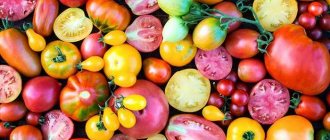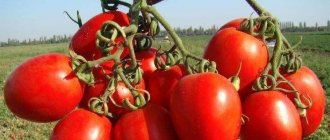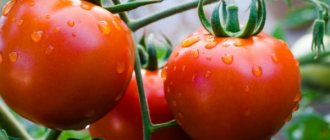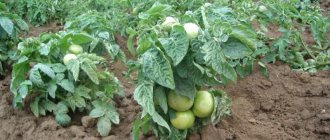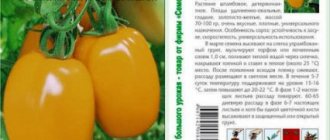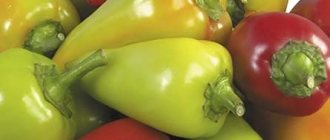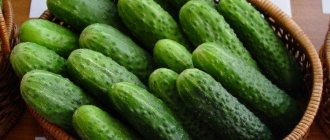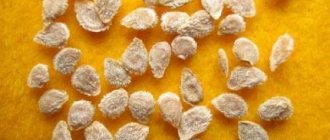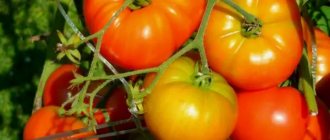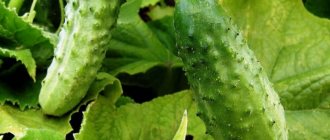Every year, breeders delight gardeners with new varieties and hybrids of tomatoes with sweet fruits. It can sometimes be difficult to choose from such a variety. To ensure that the variety does not bring disappointment instead of a large harvest of tasty, attractive vegetables, when choosing it you need to focus on the speed of fruit ripening, their size, the density of the peel and pulp. What varieties of sweet tomatoes are popular and what distinguishes one or another variety - read below.
The sweetest tomatoes for the greenhouse: cherry varieties
Small sweet tomatoes have long been recognized by both vegetable lovers and gardeners: such tomatoes are convenient to eat fresh and canned, they make tasty and attractive salads. In addition, cherry varieties are easy to grow, because, usually, the bushes of such plants have limited growth, and the fruits ripen simultaneously and in large quantities.
Popular sweet cherry varieties are:
- Yellow cherry. The variety is distinguished by small (15 g) plum-shaped fruits. On one cluster, usually 50 to 60 fruits ripen. The tomato is suitable for cultivation both in open beds and in greenhouses.
- Golden brush. The fruits of the variety are incredibly tasty and attractive (pear-shaped, yellow). Early ripening variety (95-98 days). Golden brush is suitable for cultivation in greenhouses under film and growing in small greenhouses.
- Salute (Fireworks). The average height of Firework bushes is 50-90 cm. Salute tomatoes are bright yellow, weigh 20 grams on average, and are so sweet that they are perfect for making jams.
- Sugar plum (raspberry). The variety is low-growing (plant height - 120-150 cm), early ripening period (85-97). Sugar plums are distinguished by elongated fruits weighing 20-25 grams, which tolerate long-distance storage and transportation well.
- Sweet bunch. The variety is tall, with a medium ripening period (105-108 days). The main advantages of the Bunch are high yield (due to long fruiting) and excellent taste of the fruit.
Resistant to diseases, cracking and temperature changes include hybrids with sweet, small fruits such as Cherry Blossom F1 and Cherry Lycopa F1.
Pests and diseases
Tomatoes, like other economic crops, are susceptible to the negative effects of pests and diseases. An infected plant can be saved if you understand the disease in time and take the necessary measures. The main diseases of tomatoes include:
- Streak - this disease is characterized by curling of leaves, covering the stem and fruit with yellow spots, shedding of flowers and leaves. Poor lighting contributes to the development of this disease.
- Verticillium wilt. If the plant's lower leaves dry out and fall off en masse, the bushes curl and stop developing, these are clear signs of this disease.
- Cracking of fruits. The cause of this disease may be excessive watering of the bush. An infection gets into the cracks and the fruit may begin to rot.
- Late blight or white rot. When the disease occurs, brown spots form on the leaves and fruits. A white coating appears on the underside of the leaves.
- Top rot - if dark green weeping spots form on the top fruits, this is the first sign of this disease. In some cases, this disease can only be detected by cutting a ripe tomato.
Tomatoes, especially those growing in open ground, are susceptible to various diseases and pests
Plants, especially those planted in open ground, are susceptible to pest infestation. The main pests that attack tomatoes are:
- Whitefly is a fairly common pest in most gardens. Whitefly causes yellowing and curling of foliage. The plant quickly withers. It covers the tomato bush with specific secretions on which fungi can develop.
- Slugs - this pest eats both the foliage and fruits of the plant. After damage to the fruit by slugs, the process of rotting begins.
- The spider mite is a small insect that can be visually observed on the plant in the form of a small white dot. It entangles the leaves with a white web and sucks out all the juices from them. Affected leaves turn yellow and brown spots appear on them.
- Mole cricket is a large insect that damages the root system of a plant.
In order to protect the plant from pests and reap a healthy harvest, you need to follow all the rules for caring for and growing tomatoes. Various fertilizers and disease control liquids should be used according to the instructions.
Large-fruited sweet tomatoes for greenhouses
Varieties of tomatoes with large fruits should be on every plot, because they are in special demand among buyers due to their versatility: they can be used to make salads, juices, sauces, and preserves.
The sweetest, large-fruited varieties of tomatoes for growing in a greenhouse:
- King of the early ones. It is distinguished by early ripening of light crimson, flat-round fruits weighing up to half a kilo.
- Cardinal. The tomato is tall, resistant to most diseases and pests, and frost. It is distinguished by large (up to 900 grams), fleshy, raspberry-colored fruits, which are perfect for canning and salads.
- Grandma's secret. A tall variety characterized by high yield (up to 17 kg per sq. m). The fruits of Secret are large (up to 600 g), pink-red, have a flat-round shape, dense peel and juicy, sweet pulp.
Ox heart can produce sweet vegetables weighing from 150-500 g. The taste of these tomatoes is preserved even after heat treatment.
Bull's heart
This legendary variety has not given up its position for many years. It is valued by summer residents of different regions, giving preference to the tomato for a number of advantages:
- excellent taste;
- large fruits;
- productivity (8-10 kg in greenhouses);
- suitability for transportation.
Despite the fact that this variety is demanding in terms of care, gardeners plant it year after year. When planting, take into account the tall growth of the bushes (1.5-1.8 meters) and spreading branches.
On a note! All varieties of Ox Heart are susceptible to fungal diseases (including late blight). Therefore, from the very beginning of the growing season, preventive spraying of plantings is carried out.
The fruits are large, heart-shaped, weighing 500-700 grams and more. There are no veins inside, the flesh is dense, with a minimal amount of water, and a high content of dry matter. Color depends on the type:
- pink;
- red;
- orange.
Hybrid forms with yellow, white and even black tomatoes have been developed.
Low-growing varieties of sweet tomatoes for greenhouses
Low-growing varieties of tomatoes have gained recognition due to the rapid ripening of fruits, ease of care, and high yield. The fruits of low-growing varieties are usually compact, aligned, and have an attractive appearance.
Some low-growing varieties of sweet tomatoes require mandatory staking due to their large fruits (for example, the Khlebosolny large-fruited tomato, Danko).
Among tomato varieties with limited growth and sweet fruits, Tomato Danko is especially popular. Danko bushes grow up to one and a half meters, after which their growth stops. The fruits of the variety are large, with fleshy pulp and elastic red skin, and have a small number of seeds. Danko tomato does not change its taste characteristics after heat treatment.
The Philippok tomato does not require gartering or pinching. Filippka bushes reach a maximum height of 40 cm, and the fruits weigh up to 100 grams. Filippok is also suitable for cultivation in open ground, but the highest yield of the variety is observed in greenhouse conditions.
The most popular varieties of tomatoes with sweet pink fruits include Spring of the North and Doll Masha.
Unlike classic pink tomatoes, Vesna Severa and Kukla Masha are distinguished by fruits with dense pulp that are resistant to long-term transportation. In addition, the varieties tolerate climate changes well and are resistant to diseases.
How to increase the sugar content of tomatoes?
We recommend reading our other articles
- What to feed a horse?
- Gloxinia flower
- Why do ficus leaves fall off?
- Why doesn't geranium bloom?
To get tomatoes with a high sugar content, you need to plant the sweetest varieties of tomatoes. However, the sweetness of a tomato depends not only on the variety, but also on care.
- Sunlight allows tomatoes to ripen faster and also increases their sugar content.
So it is worth growing crops either in open ground in a sunny area, or in greenhouses, under additional lighting. Sunlight allows tomatoes to ripen faster and also increases their sugar content - Fertilizing with phosphorus-potassium mixtures also increases the sugar level in tomatoes. The crop needs to be fed regularly, but not more than once every 2-3 weeks.
- Humus should only be added as part of phosphorus-potassium mixtures for sweet varieties of tomatoes.
- The addition of copper, boron and manganese increases the sugar content of fruits and shortens their ripening time by 3-8 days.
- Nitrogen fertilizers such as nitrate, manure, mullein, chicken manure, urea should be strictly controlled and used only at the beginning of plant development, before fruit formation. The reason is that nitrogen makes tomatoes too watery and sour - their sugar levels are extremely low.
- In order for the fruits to absorb all the necessary substances and microelements, it is necessary to correctly form the plant into 1,2 or 3 stems, pinching if necessary, otherwise the plant simply does not have enough strength to saturate the fruits with sugars.
Sweet varieties of tomatoes for greenhouses: reviews
Based on the experience of greenhouse growers, hybrid varieties of tomatoes can boast the highest yield of sweet fruits. They are resistant to diseases and temperature changes (the temperature in a greenhouse without heating day and night during the cold period can vary greatly). In addition, hybrids are distinguished by early fruit ripening.
The most popular hybrid varieties of tomatoes with sweet fruits that have received positive reviews are:
- Pink Flamingo F1. The tomato is distinguished by its early ripening (fruits can be collected 90-95 days after the first shoots), resistance to diseases and cracking. The variety belongs to the salad variety. In addition, the sweet, plum-shaped fruits of the Pink Flamingo are excellent for canning.
- Samara F1. The hybrid is distinguished by attractive red round-shaped fruits. The hybrid is resistant to cracking, TMV, Fusarium wilt and brown spot. The harvest can be harvested with tassels. The fertility of the variety is 12-15 kg per square meter. m.
- Handbag F1. Tomato copes well with temperature changes, so it can be grown in greenhouses without heating. The fruits of the bag are cube-shaped, slightly ribbed, have a red, dense skin, and weigh, on average, 250 grams. The yield of the hybrid can reach up to 16 kg per square meter. m.
Popular greenhouse tomato hybrids characterized by rapid growth are Schastia F1 and Schastia Russkoe F1. In addition, these varieties are unpretentious in care, and their fruits are resistant to cracking.
Sweet-fruited tomatoes for planting in open ground
For planting on ridges, breeders offer unpretentious varieties that produce yields even in unfavorable summers.
Appetizing dark
Large burgundy tomatoes ripen on bushes up to one and a half meters high. The variety is productive, with a long period of fruit production.
On a note! The tomato tolerates slight cold snaps and is resistant to low temperatures.
The plant produces ruby-colored fruits with a pronounced color of noble red wine. Inside is juicy, sugary pulp, broken with droplets of moisture. By weight - 400-500 grams, ripen in 110-115 days.
Pink honey
A well-known variety cultivated in various regions. Suitable for beds, shelters, but the taste of the fruits of plants in the open air is better. Pink honey is a mid-early tomato and produces up to 4 kg per square meter.
Tomatoes are a beautiful crimson color, heart-shaped, with sugary pulp. They grow up to 400-500 grams, and when the ovaries form – up to a kilogram. Forming into 1-2 stems, depending on growing conditions.
Bokele F1
The bushes of this hybrid tomato grow up to a meter in height and have few leaves. The fruits ripen together, surprising with their colorful color. The skin is pink with mother-of-pearl, inside there is sweet sugar pulp. Tomatoes are like balls, weighing on average 100 grams. The hybrid is demanding when it comes to watering.
Carbon
A variety with an interesting name and beautiful, chocolate-colored tomatoes. Tomato from the indeta group, tall, with abundant fruiting. Tomatoes weighing up to 300 grams, sweet taste. Round in shape, slightly flattened, with a dark area near the stalk.
On a note! In catalogs, tomato is often found under a different name - Carbon.
The best sweet varieties of tomatoes for greenhouses (video)
Sweet tomatoes are the favorite vegetables of both children and adults. These tomatoes can be canned and used for making salads, juices, and sauces. The success of growing sweet vegetables in a greenhouse largely depends on the correct variety chosen. So, for regions with a short warm period, it is better to choose early ripening varieties. Vegetables for canning must have elastic skin that will not crack, and fruits for sale in distant areas must be resistant to transportation and be stored for a long time. Choose varieties of tomatoes with sweet fruits from those presented above and enjoy the excellent taste!
- Author: admin
Rate this article:
- 5
- 4
- 3
- 2
- 1
(8 votes, average: 3.8 out of 5)
Share with your friends!
Sweet varieties of tomatoes for open ground
The selection of seeds for open areas is made more carefully, taking into account their resistance to weather conditions, diseases, yield, and taste.
| Name | Characteristic | Landing region |
| Pink honey | The height of the bush is about 1 m. Resistance to diseases is average. The shape of the vegetable is heart-shaped; color – raspberry; sugar taste. Tomatoes ripen in 111-115 days. | Central Russia, Siberia, since the variety is resistant to temperature changes. |
| Sweet icicle candies | Tomatoes are oblong in shape with a spout at the end, weighing 50-70 g. The height of the bush is 50-70 cm; it is necessary to install supports, since one brush can hold about 12 fruits. Early ripening, frost-resistant plant. According to gardeners, the plant is unpretentious, the vegetables have a rich taste, which is preserved in pickled form. | Any region of Russia. |
| Koenigsberg gold | Mid-season, high-yielding tomato, fruits are elongated, rich yellow, juicy, weighing 300 g. | Southern, central regions, Siberia, as the vegetable is frost-resistant. |
| The Tsar Bell | Mid-season, determinate, bush up to 1 m long. Resistant to changes in air temperature and diseases. The tomatoes are large, high yield, up to 18 kg. | Southern, Central regions. |
| Winter cherry | Early ripening variety, does not require removal of shoots. Deep raspberry colored tomatoes, weighing 110 g. | Northern and middle regions of Russia. |
Photo:
The Tsar Bell
Golden Koenigsberg
Sweet icicle candies
Pink honey
Winter cherry
The described crops are recommended for preparing salads, dishes, and winter preparations. Small fruits can be preserved whole. It is more convenient to make juices and ketchups from large tomatoes. Experienced gardeners advise planting a plot with different varieties of tomatoes to identify the ones that are suitable.
